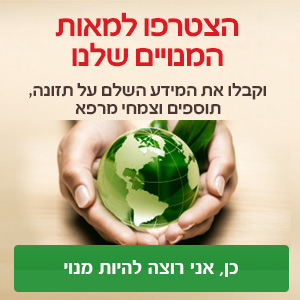חלק הצמח | איכויות | רכיבים פעילים | התוויות | מינונים | רגישות | תופעות לוואי |
מינון יתר | אזהרות | התוויות נגד | רעילות | אינטראקציות | הריון | הנקה
מקור השם כלידוניום הוא במילה היוונית Chelidon, שפירושה סנונית, כיוון שהפרחים פורחים עם בוא הסנוניות.
השם העממי (Celandine) הוא עיוות של השם הבוטני.
כלידוניום הינו צמח עשבוני רב שנתי. מוצאו באירופה ובמערב אסיה.

משרד הבריאות בישראל מגביל את השימוש בחלק העל-קרקעי של כלידוניום, ומתיר אותו לשיווק בבתי מרקחת בלבד.
חלק הצמח בשימוש
נוף הצמח הטרי.
איכויות
טמפרטורה: קר.
לחות: יבש.
טעם: מר, צורב.
רכיבים פעילים עיקריים
אלקלואידים איזוקווינולינים (0.35%-1.3%, ביניהם chelidonine, chelerythrine, sanguinarine, berberine, coptisine), פלבונואידים, פנולים.
התוויות
אבנים בכיס המרה, דלקת בכיס המרה, דלקת בדרכי המרה, דלקת עיניים.
מינונים
תמצית נוזלית בריכוז 1:3, 45% אלכוהול – 2-4 מ"ל ביום.
חליטה – 3-5 גרם ביום.
בפורמולה – 20-25%.
רגישות
קיים דיווח בודד אודות גירוי מקומי (contact dermatitis) לאחר שימוש חיצוני בכלידוניום(1).
תופעות לוואי
שימוש בכלידוניום טרי עלול לגרום למידע השלם למנויים
במחקרים שכללו שימוש בכלידוניום ברפואה הסינית, דווחו תופעות לוואי (בשכיחות וחומרה משתנות) כגון למידע השלם למנויים
מינון יתר
לא ידוע על מינון יתר.
אזהרות וצעדי מנע
כלידוניום אינו מומלץ לשימוש פנימי ארוך-טווח. יש למידע השלם למנויים
התוויות נגד
אין להשתמש בכלידוניום במצבים של למידע השלם למנויים
יש לנקוט זהירות בשימוש במצבים של למידע השלם למנויים
על פי הרפואה הסינית, יש לנקוט זהירות ב למידע השלם למנויים
רעילות
ישנן מספר עדויות הקושרות שימוש פנימי בכלידוניום עם למידע השלם למנויים
מדד רעילותLD50: למידע השלם למנויים
תגובות הדדיות עם תרופות / צמחי מרפא / תוספי תזונה
רעילות תרופתית – יש לנקוט זהירות בשילוב כלידוניום עם תרופות בעלות פוטנציאל לגרימת נזק לכבד(5) תרופות אלה כוללות:
תרופות נוגדות דלקת, להורדת חום (Antipyretic) ושיכוך כאבים (Analgestic) למידע השלם למנויים
תרופות נוגדות פרכוסים: למידע השלם למנויים
תרופות מדכאות חיסון: למידע השלם למנויים
תרופות לטיפול בשחפת: למידע השלם למנויים
תרופות נוגדות דיכאון ממשפחת הטריציקליים (Tricyclic antidepressants) כגון למידע השלם למנויים
זו רשימה חלקית בלבד. קיימות עוד תרופות רבות המזיקות לכבד, כגון למידע השלם למנויים
הריון
כלידוניום אסור לשימוש בהריון(5).
הנקה
כלידוניום אסור לשימוש בהנקה(5).
מקורות
- Etxenagusia MA, Anda M, Gonzalez-Mahave I, et al. Contact dermatitis from Chelidonium majus (greater celandine). Contact Derm 2000;43:47.
- McGuffin M, Hobbs C, Upton R, Goldberg A (eds). American Herbal Products Association’s Botanical Safety Handbook. Boca Raton, FL: CRC Press, 1997.
- Chang HM, But PP. Pharmacology and Applications of Chinese Materia Medica, vol 1. Singapore: World Scientific; 1987. pp. 390–394
- Pinto Garcia V, Vicente PR, Barez A, et al. Sangre (Barc). 1990;35(5):401–403.
- Mills. S, Bone K, The Essential Guide to Herbal Safety. Churchill Livingstone, 2005
- Brinker F. Herb Contraindications and Drug Interactions, 4th ed. Sandy (OR): Eclectic Medical Publications; 2010
- Bensky D, Gamble A, Kaptchuk T. Chinese Herbal Medicine Materia Medica. Vista, CA: Eastland Press, 1993
- De Smet PA, Van den Eertwegh AJ, Lesterhuis W, et al. BMJ. 1996;313(7049):92.
- Greving I, Niedereichholz U, Meister V, et al. Poster No. PO19, Europäischer Pharmakovigilanz Kongress, Berlin: 1997.
- Greving I, Meister V, Monnerjahn C, et al. Pharmacoepidemiol Drug Saf. 1998;7: S66–S69.
- Strahl S, Ehret V, Dahm HH, et al. Dtsch Med Wochenschr. 1998;123(47):1410–1414.
- Benninger J, Schneider HT, Schuppan D, et al. Gastroenterology. 1999;117(5): 1234–1237.
- Crijns AP, de Smet PA, van den Heuvel M, et al. Ned Tijdschr Geneeskd. 2002;146(3):124–128.
- Stickel F, Poschl G, Seitz HK, et al. Scand J Gastroenterol. 2003;38(5):565–568.
- Rifai K, Flemming P, Manns MP, et al. Internist (Berl). 2006;47(7):749–751.
- Moro PA, Cassetti F, Giugliano G, et al. J Ethnopharmacol. 2009;124(2):328–332.
- Mazzanti G, Di Sotto A, Franchitto A, et al. J Ethnopharmacol. 2009;126(3): 518–524.
- Sokoloff B, Saelhof CC, Yoshichi MD, et al. Growth. 1964;28:225–231.
- Pinto García V, Vicente PR, Barez A, Soto I, Candas MA, Coma A. Hemolytic anemia induced by Chelidonium majus. Clinical case. Sangre (Barc) 1990; 35: 401-403.
- Benninger J, Schneider HT, Schuppan D, Kirchner T, Hahn EG. Acute hepatitis induced by greater celandine (Chelidonium majus). Gastroenterology 1999; 117: 1234-1237
- Teschke R, Genthner A, Wolff A, Frenzel C, Schulze J, Eickhoff A. Herbal hepatotoxicity: analysis of cases with initially reported positive re-exposure tests. Dig Liver Dis 2014; 46: 264-269.
- Conti E, De Checchi G, Mencarelli R, Pinato S, Rovere P. Lycopodium similiaplex-induced acute hepatitis: a case report. Eur J Gastroenterol Hepatol 2008; 20: 469-471.
- Teschke R, Glass X, Schulze J, Eickhoff A. Suspected Greater Celandine hepatotoxicity: liver-specific causality evaluation of published case reports from Europe. Eur J Gastroenterol Hepatol 2012; 24: 270-280.
- Teschke R, Glass X, Schulze J. Herbal hepatotoxicity by Greater Celandine (Chelidonium majus): causality assessment of 22 spontaneous reports. Regul Toxicol Pharmacol 2011; 61: 282-291.
- Pantano F, Mannocchi G, Marinelli E, Gentili S, Graziano S, Busardò FP, di Luca NM. Hepatotoxicity induced by greater celandine (Chelidonium majus L.): a review of the literature. Eur Rev Med Pharmacol Sci. 2017 Mar;21(1 Suppl):46-52

דוגמא למונוגרף מלא
לרכישת מנוי |
כניסת מנויים






